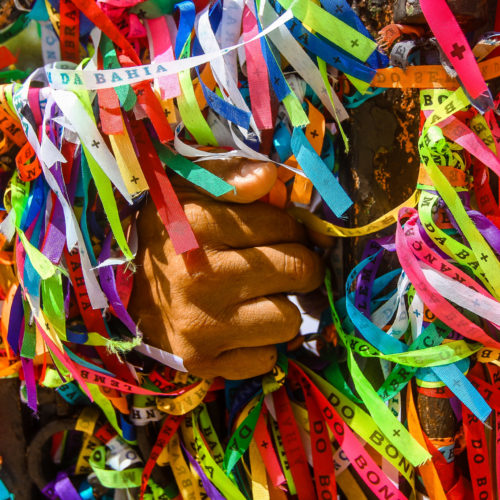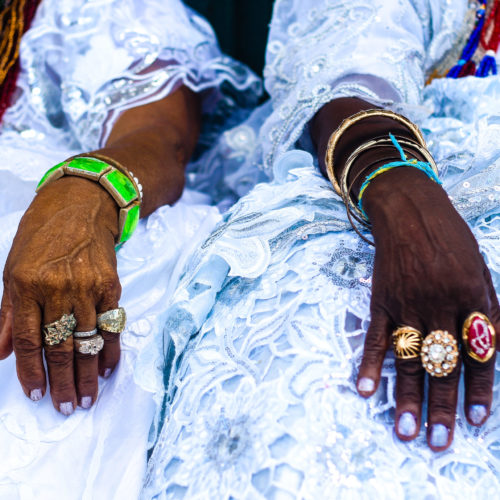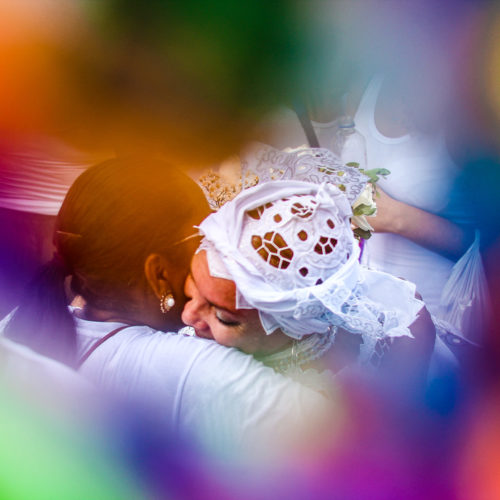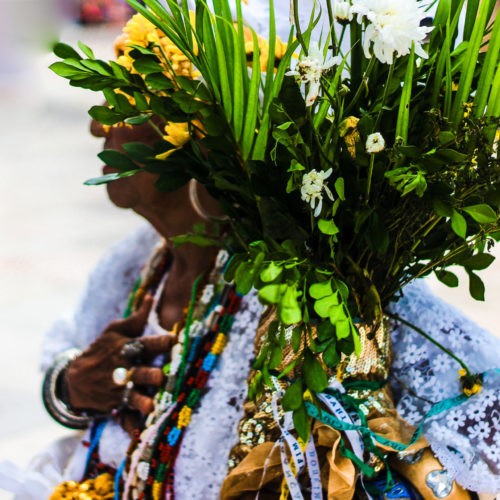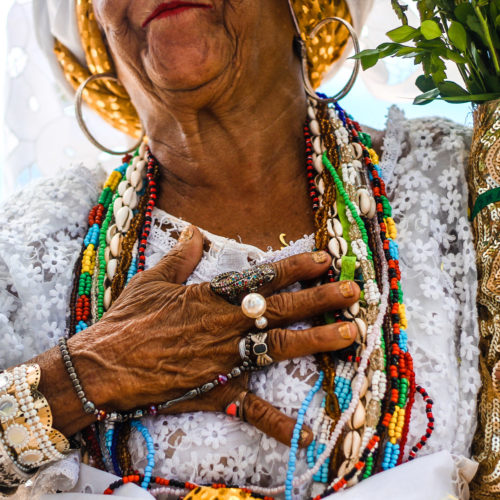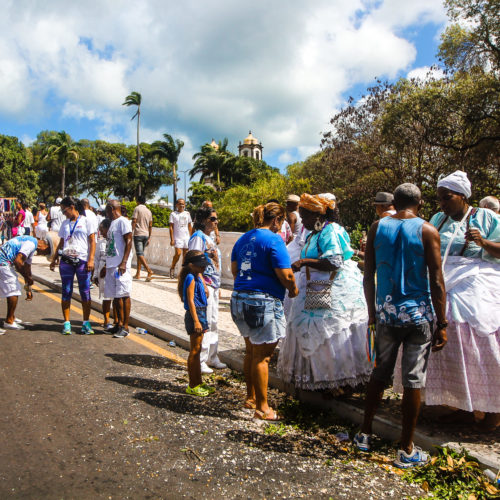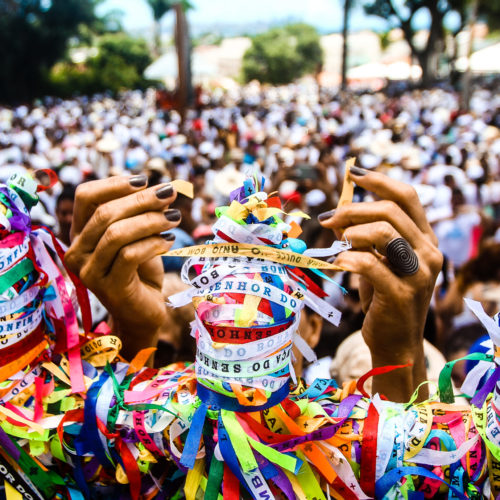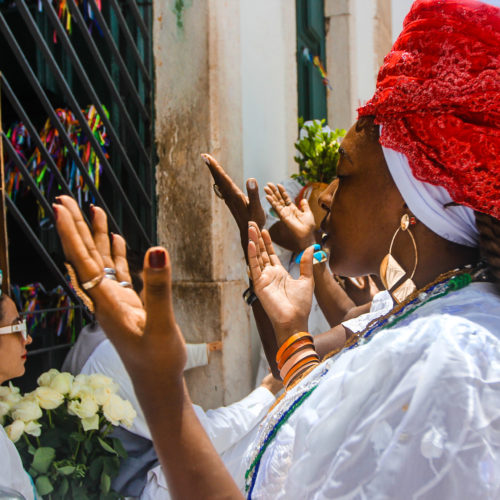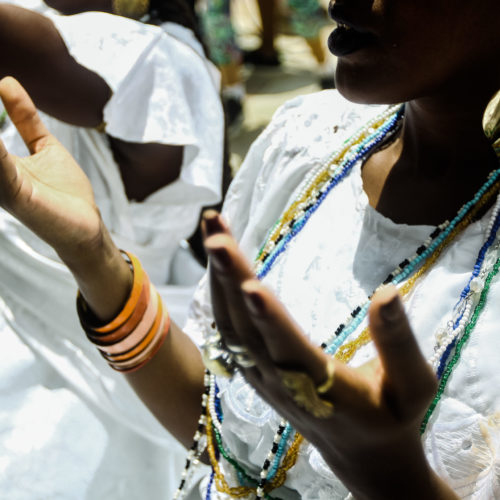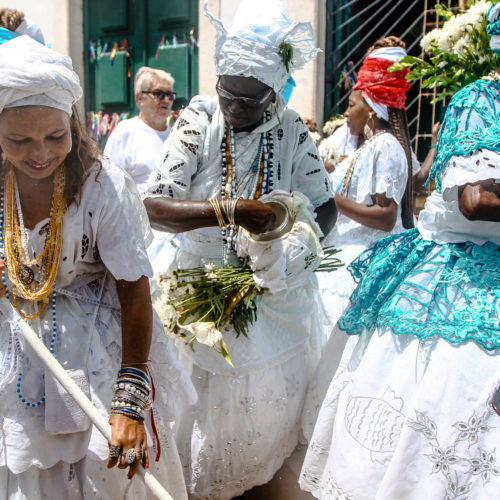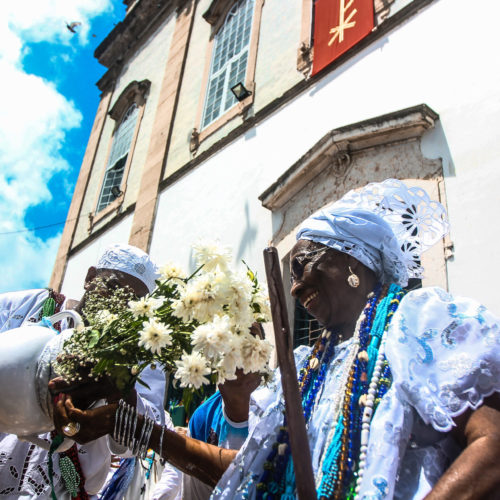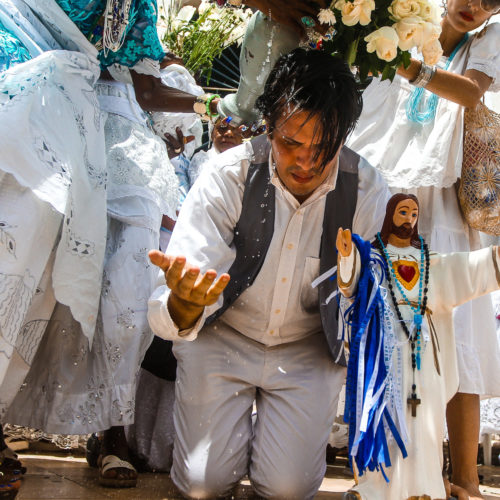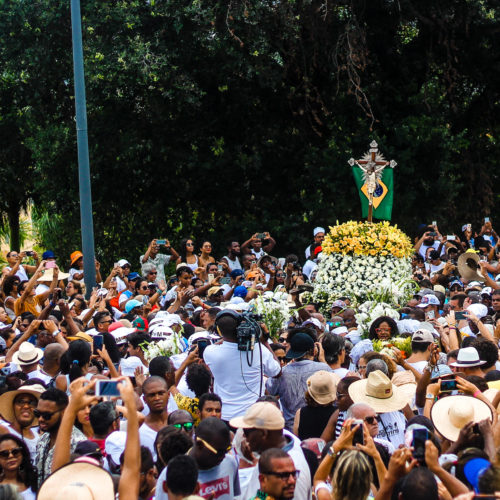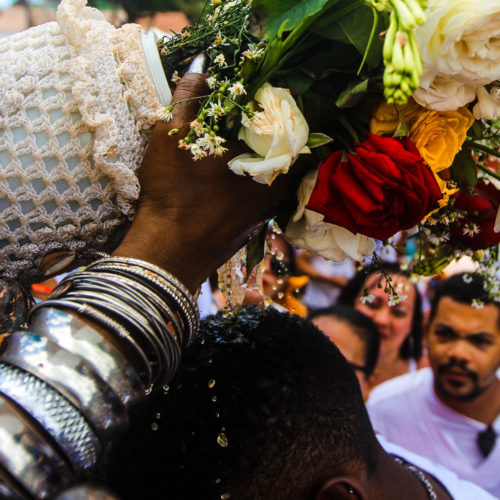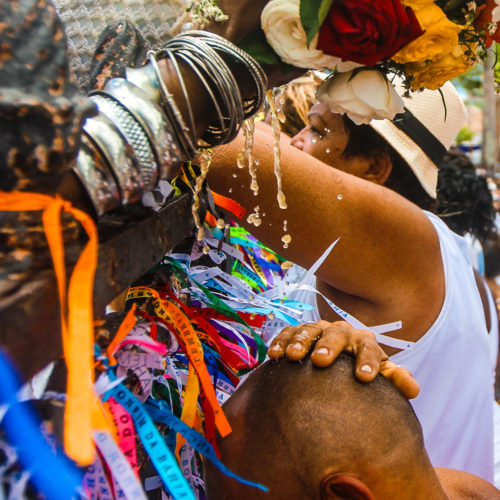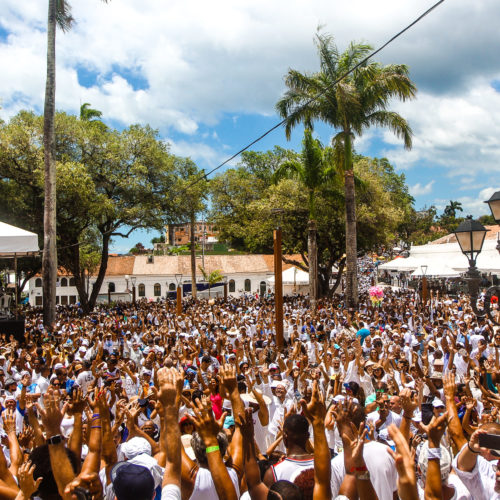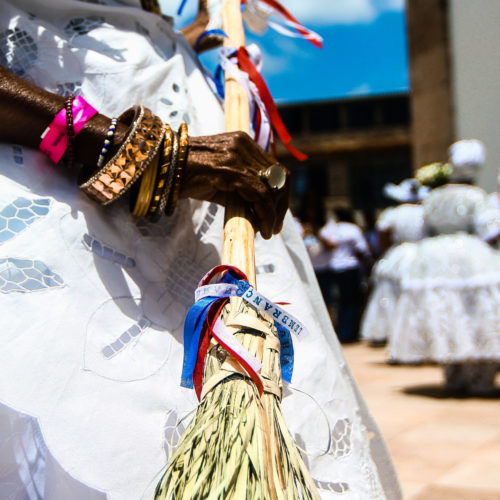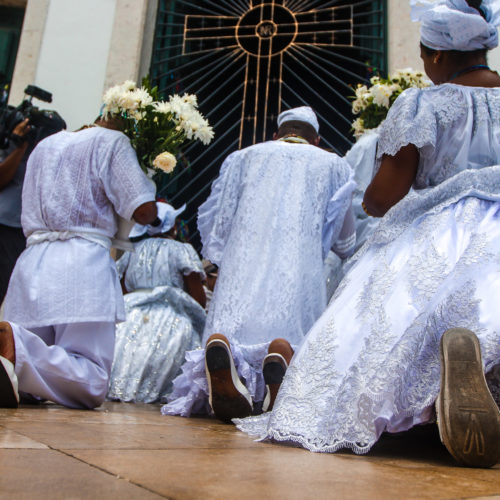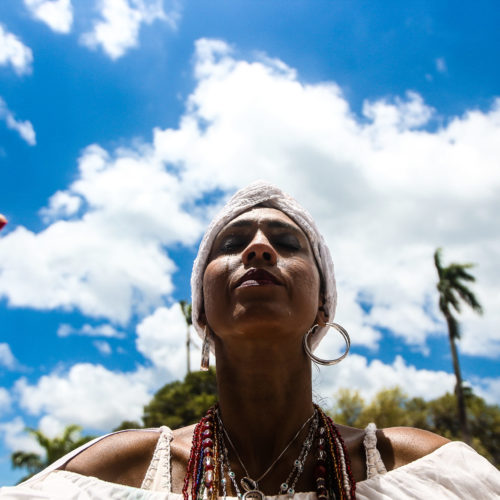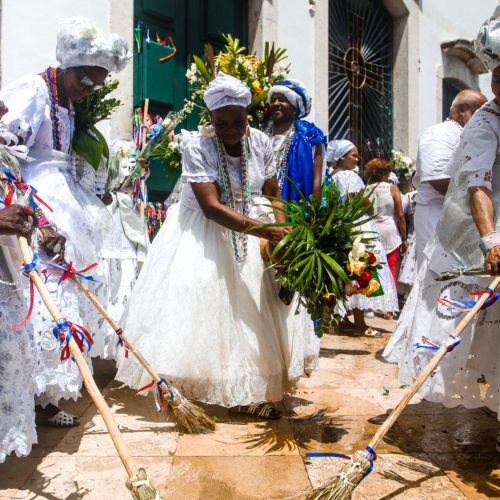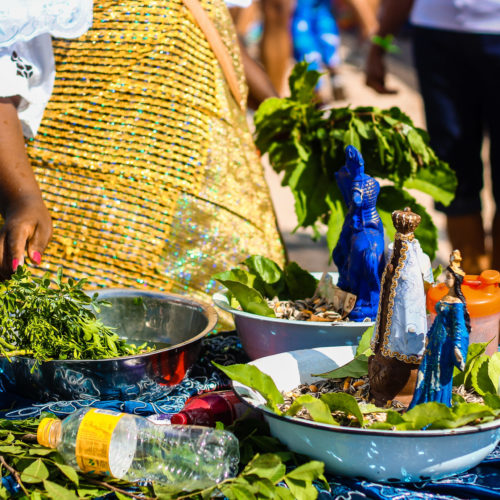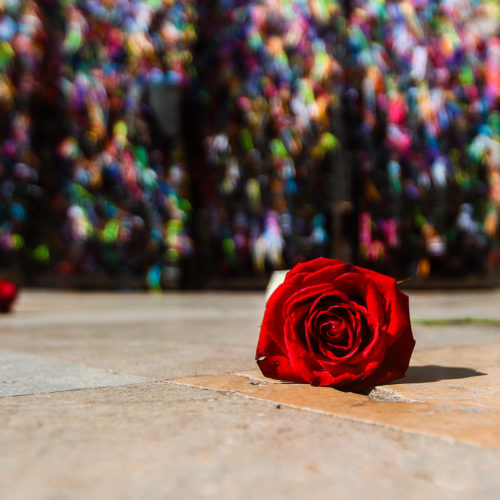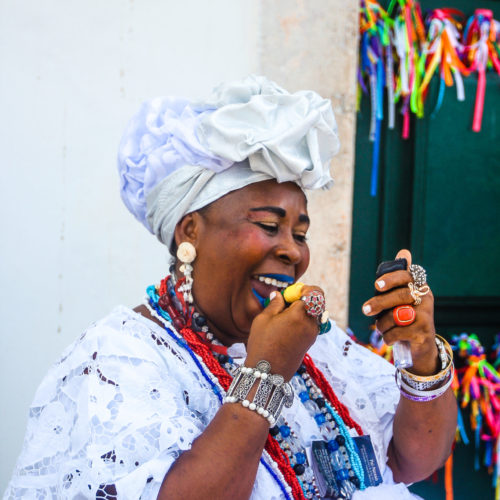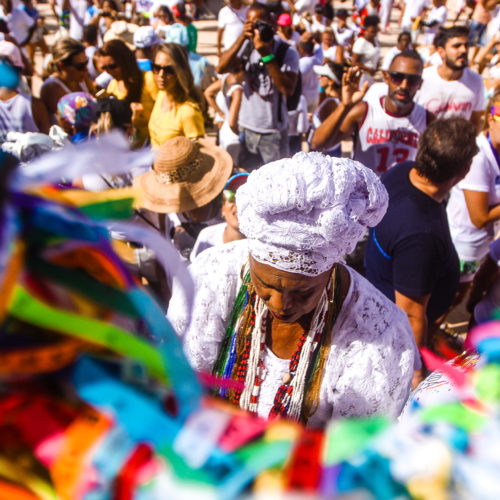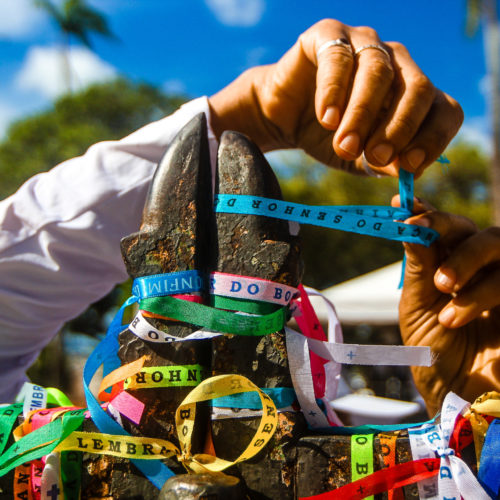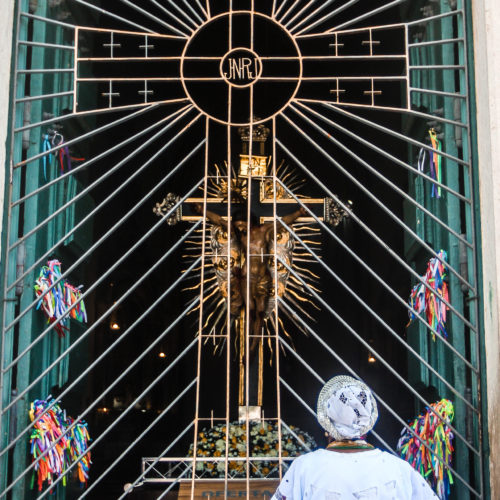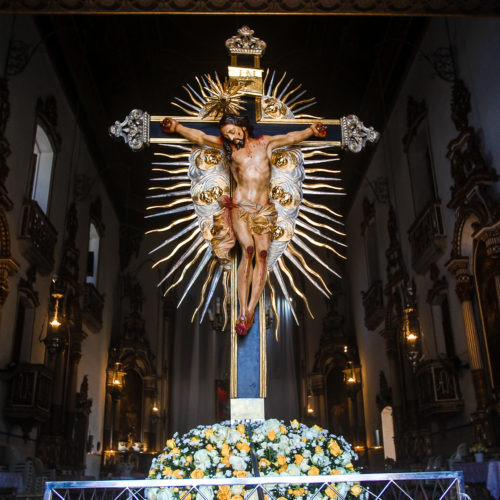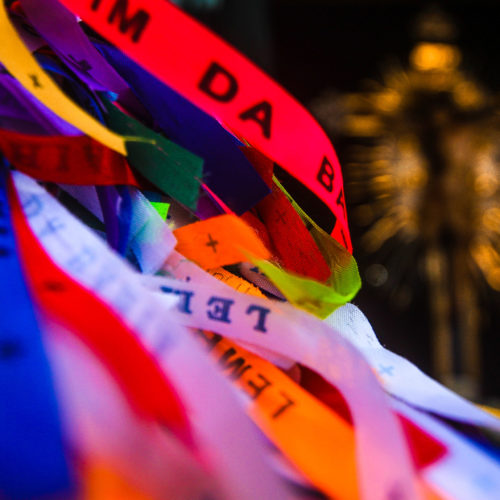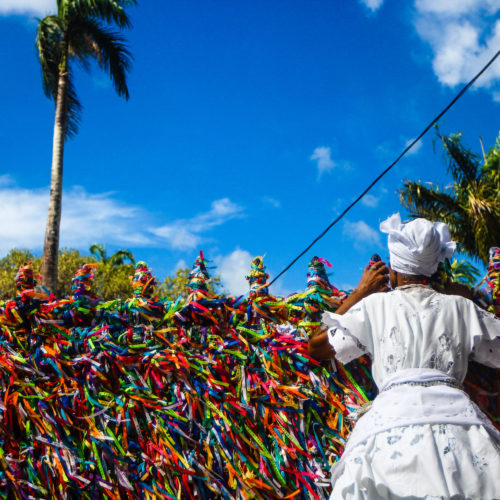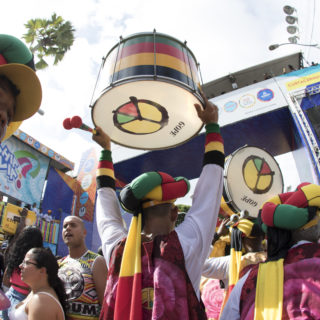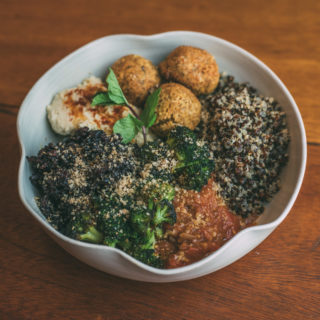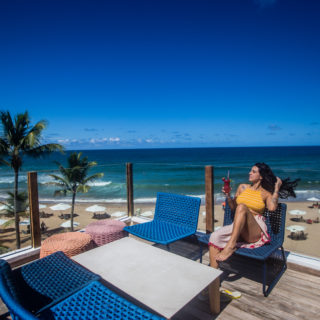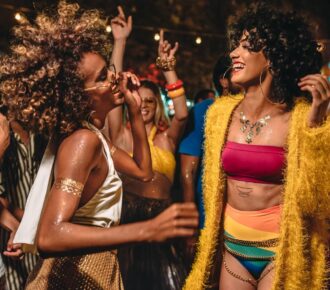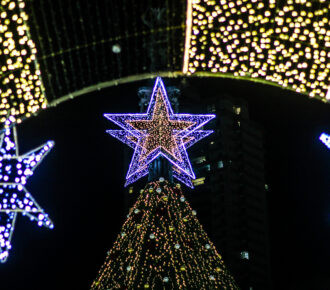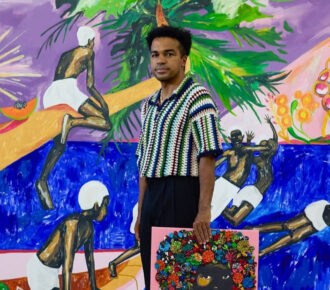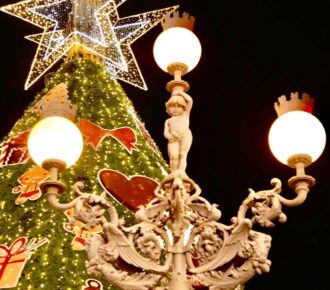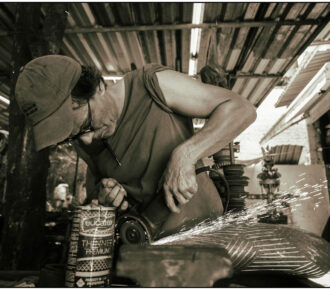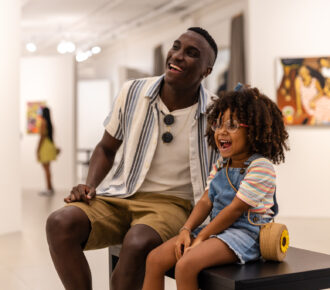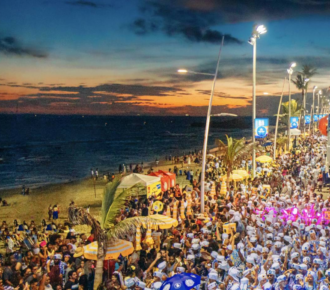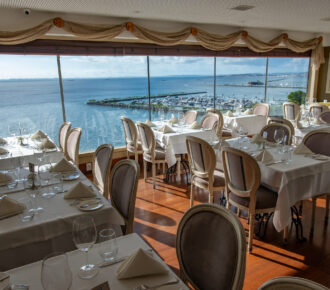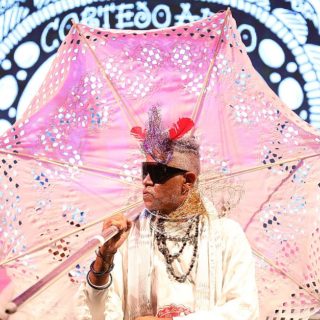
Tranquility, devotion, beautiful landscapes and gastronomic delights in Cidade Baixa
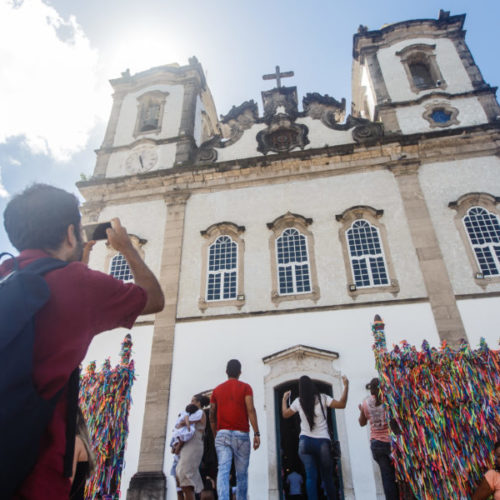
Friday, white clothes, ribbon on the arm and faith in Our Lord of Bonfim. You miss this, right? Salvador has many traditions and certainly one of the most important is to climb the Holy Hill (Colina Sagrada) to thank for the week in the Basilica Santuário Our Lord of Bonfim. That means: an unmissable tour for when the quarantine ends. After all, as the popular saying goes: “Whoever went to Bahia and did not go to Bonfim, did not go to Bahia”. And if you already did, you certainly need to put an end to this nostalgia called Bonfim.
The Bonfim neighborhood is also synonymous with devotion and, with no doubt, is a haven of tranquility and beauty. Aren’t you counting the days to stop by this neighborhood, which is one of the most beloved in the city?
It is there, in fact, that one of the biggest popular celebrations in the country takes place: the traditional Lavagem do Bonfim, symbol of religious syncretism in Bahia, where Catholics and Candomblé adherents share the same faith. All are dressed in white and travel 8 km in procession, from Largo da Conceição, in the Comércio district, to Largo do Bonfim, in Cidade Baixa. The mixture of the sacred and the profane marks the festival, which has been taking place for 247 years, and marks the rites for the Day of Our Lord of Bonfim and the warm-up for the Salvador Carnival.
We’ve prepared a perfect playlist for this experience. Listen now!
One of the itineraries that are a symbol of the Bahian capital
When the isolation is over, you will probably be doing this itinerary on your first Friday. Whether for a morning tour, passing by the Church of Bonfim to take a picture with the ribbons and ask for a blessing to Our Lord of Bonfim, or at sunset, enjoying one of the most beautiful views of the city: Ponta de Humaitá. How we miss it all!
For now, we can take a walk there through our memories. Thinking about it, we have made a list of things that represent this neighborhood. Take the opportunity to write down everything you want to see again or still want to know.
Discover the Basilica, the museum and close the tour by climbing the tower
The Basilica of Our Lord of Bonfim was inaugurated on June 24, 1754 and is located in the neighborhood of Bonfim, which is on the Itapagipana Peninsula – between the districts of Boa Viagem, Massaranduba and Roma – in one of the most privileged regions of the city. From there, it is possible to contemplate a charming view of the All Saints Bay. Find out more at this link.
The Basilica Church of Our Lord of Bonfim – or just Bonfim Church – is frequented by many tourists, but is also visited frequently by residents. It is there that you will take one of the most emblematic photos of those who visit Salvador: tying your ribbon from Our Lord of Bonfim to the Church grid.
The Bonfim ribbon is one of the most important symbols of Bahianity. When tied around the wrist with three knots, the ribbon represents the desire to fulfill three requests. The ribbons are also tied to the church grids and burned annually as a symbol of taking the requests to the heavens.
The church has masses every day. However, Fridays are the most traditional days and are the moments where Bahians and tourists dress in white in thankfulness to Our Lord of Bonfim. In masses, it is even possible to carry a replica of the saint’s image during the offertory (you can register on the sanctuary website).
The room of miracles
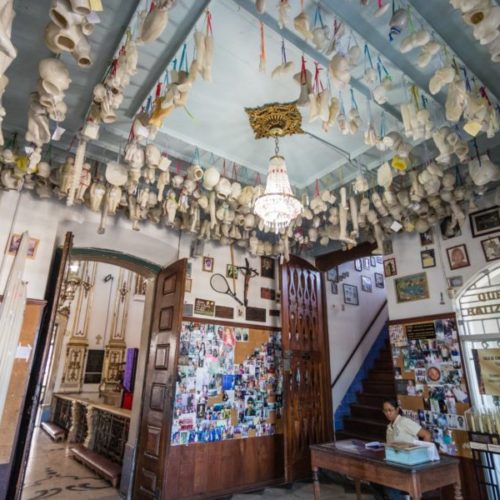
In addition to this tradition, what attracts the public the most, especially from Bahia, is the room of miracles. It is there that the faithful use to leave replicas of parts of the human body in wax as a sign of request or thankfulness for the cure of an illness.
There, too, there is an image of Our Lord of Bonfim that was brought by Captain Teodózio de Portugal, in 1745. With the increase in devotion to the saint, the church was erected on land donated by a noble family in the city, on April 19, 1754. With frescoes and tiles, the Basilica has architecture in colonial baroque and neoclassical styles, in addition to the rococo facade, following the model of the Portuguese churches of the 18th and 19th centuries.
Syncretism
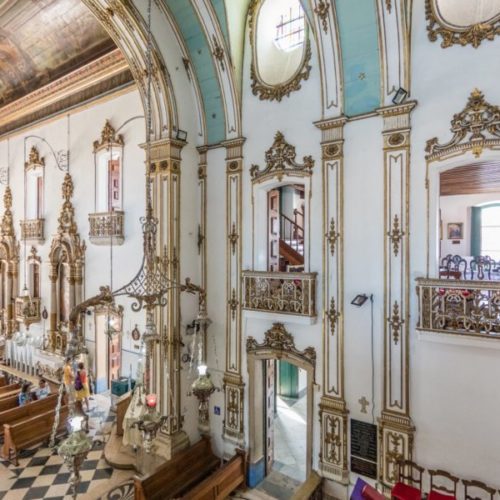
The place is a point of reference not only for Catholics, but also for followers of Candomblé. Historically, adepts of candomblé have come to identify Our Lord of Bonfim as a correspondent for the orisha Oxalá. In fact, religious of African origin are in Praça do Largo do Bonfim, in front of the Basilica, offering rituals of the so-called bathing of leaf and cleaning of energies. Before the pandemic, the temple received about three thousand people daily.
As it faces the entrance to the All Saints Bay, the church is seen by those who arrive in Salvador by sea. From the top of the Holy Hill, it is possible to see a contrast between two distinct cities: the one in its surroundings, formed by houses dating from the post-war period, and the one in modern Salvador, with tall buildings in Vitória and Barra.
Despite being one of the most popular and beloved saints among Bahians, Our Lord of Bonfim is not the patron saint of Salvador, and this title belongs to São Francisco Xavier. Our Lord of Bonfim is, however, the one that has the biggest religious festival in the city: Lavagem do Bonfim (read more below).
There, in Bonfim Church, the Praça do Largo do Bonfim, which is close to the sanctuary of the basilica, also stands out and has been totally revitalized and expanded by the City Hall of Salvador, giving the feeling of continuity of the church stairs. Now, the entire paving of the place is composed of mosaic and graphics marked on the floor with Portuguese stone.
Service
Location: Largo do Bonfim, no number, Bonfim, Salvador-BA.
Contact: (71) 3316-2196. All schedule on this link.
One of the most famous popular parties in Bahia
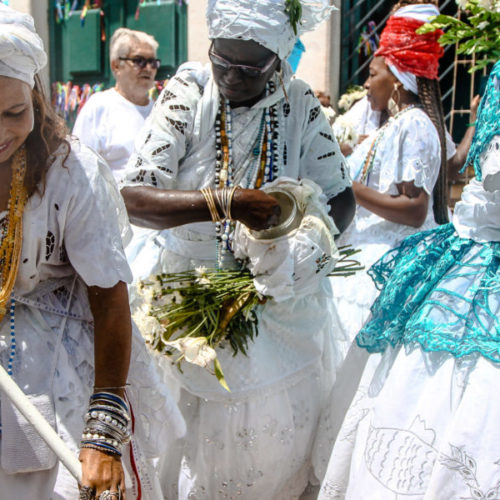
Lavagem do Bonfim is the most traditional party in the Popular Festivals calendar in Salvador. It always takes place on the second Thursday of January, in a celebration that involves the Catholic faith and religious syncretism. But, first of all, it is necessary to understand the meanings of this celebration, as well as its importance.
In short, the celebration begins in front of the Church of Conceição da Praia, where an Ecumenical Worship takes place. It is good to arrive early, as the mass starts around 8 am. The processions go out one by one towards the Bonfim Church. Our Lord of Bonfim is syncretized with Oxalá. It is very beautiful to see all kinds of devotees walking together – almost all of them in white forming a human carpet of faith.
Who has faith goes on foot
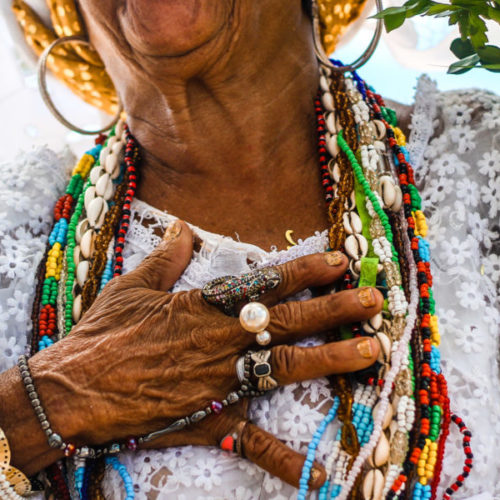
Then, a walk of approximately 8 km to the Church of Our Lord of Bonfim begins. Several processions take the route, including Afoxé Filhos de Gandhy. They don’t have a specific time (nor is it announced) to leave, so you have two options: one, is to stay alert and walk with them from Conceição da Praia; the other is to find them along the way.
The baianas procession leaves around 9:30 am, right after the ecumenical mass, but many of them go before. Upon arriving at the Holy Hill, they wash the staircase. There, another mass is celebrated in the late morning. The party, which has been happening for more than two centuries, mobilizes thousands of faithful, supporters and tourists.
If you’ve done the Lavagem route, I’m sure your heart was filled with nostalgia now just to imagine that sea of people walking for the blessings of Our Lord of Bonfim. In recent years, the procession has had special moments when passing by the Santa Dulce dos Pobres Sanctuary, which is a few meters from the Bonfim Basilica.
In addition to the sacred, the profane makes the joy of devotees. On the way between the churches, many cultural and artistic groups animate the faithful. Along the route, there are also several stalls with typical foods – the best ones are closer to the end of the route where you can eat a beautiful feijoada to boost your energy after the walk. Now I’m sure you got your mouth watering.
Learn more about Lavagem do Bonfim at this link.
Natural Beauties
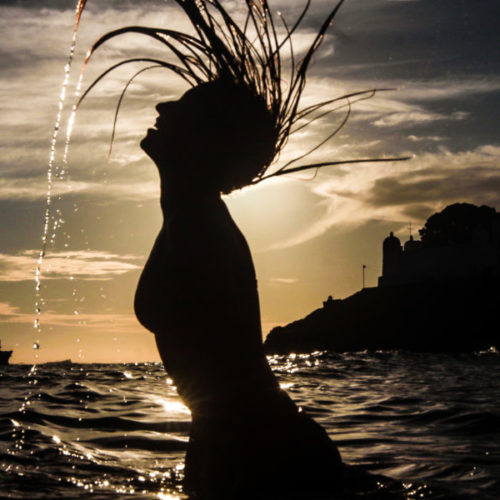
The surroundings of the Basilica of Bonfim have several natural beauties that are also worth visiting.
Porto da Lenha beach
Porto da Lenha Beach, which is at one end of Avenida Beira-Mar – which skirts Ribeira to Bonfim – has the view from Baixa do Bonfim to Baía de Todos os Santos as an attraction. From there, it is possible to see the Ilha de Maré, Ponta de Nossa Senhora and the Subúrbio Ferroviário.
However, the main attraction of the place, which is located in Marina Belvedere or Marina do Bonfim, is the dish of sun-dried meat with manioc pirão – the best in Salvador – served in the stalls at the local, which is also known as Estaleiro do Bonfim. In the shade of the almond trees, other typical dishes are served. It is a beautiful place for you to go in the late afternoon to enjoy the view.
Boa Viagem
Very close to Bonfim, 15 minutes from the church, is Boa Viagem beach. Bathed by the calm waters of All Saints Bay, the place has a unique view of the buildings in Barra and is very popular with residents on weekends. Therefore, the beach is usually empty from Monday to Friday.
The beach is well known for being the starting point of the Procession of Nosso Senhor dos Navegantes (Our Lord of the Navigators). The party has two maritime processions: the first, on December 31, takes the route Largo da Boa Viagem / Basílica da Conceição da Praia, in the Lower City; the second, on January 1st, is formed by hundreds of vessels accompanying the Galeota Gratidão do Povo, which takes the image of Nosso Senhor dos Navegantes through the waters of All Saints Bay, from the pier of the Second Naval District to the beach of Boa Viagem.
Ponta do Humaitá and Monte Serrat Fort
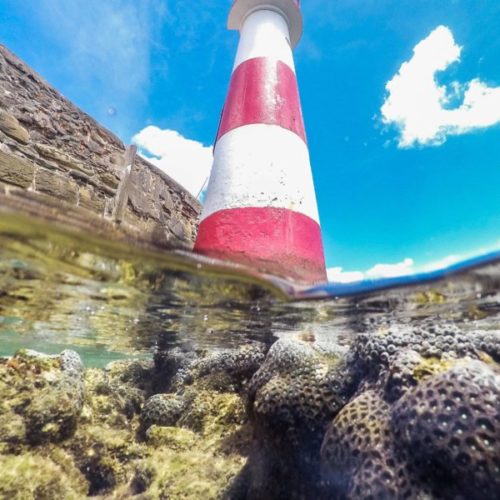
Ponta de Humaitá, in the Lower City, listed by the National Institute of Artistic and Historical Heritage (Iphan) since 1957, is undoubtedly one of the most charming places in Salvador. It is a very popular place for people from Salvador, who usually go in the late afternoon to have fun, relax and eat something. With a privileged view of the All Saints Bay and an unforgettable sunset, the small peninsula over the All Saints Bay is close to Bonfim and Boa Viagem Beach.
Humaitá houses buildings from the 16th century: the Church and the Monastery of Our Lady do Monte Serrat. In addition to them, the place also has a lighthouse and a pier, recently renovated to be more comfortable to the visitor.
The Monte Serrat Fort is considered, for its harmonious lines, one of the most beautiful military monuments in Bahia. Built from 1583, in a strategic position at the top of Ponta de Humaitá, it was completed in 1742, without changes in its original plan. Since 1993, it houses the Museu da Armaria (Armory Museum), with civil and military armaments, some used by the Army in the past. From this fort, you can see Salvador on one side and Itaparica Island on the other.
To Eat & Drink
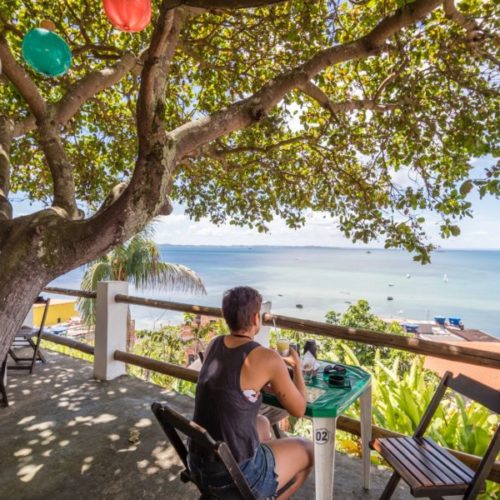
Praça Divina
Praça Divina, at the bottom of Ladeira Porto do Bonfim and at the end of Avenida Beira Mar, is one of Bonfim’s main places of interaction. A few years ago, the Bonfim Fair was held there, always on Saturdays, at night.
At the fair, just as in Largo da Madragoa, took place the “footing”, flirting. It was also common for families to be present on market days. Currently, the square is an attraction at night in Itapagipana. Take the opportunity to eat the famous manioc pirão with sun-dried meat in one of the bars.
In this part of the city, there are great restaurant options, and many have an excellent view of the All Saints Bay. Make some time, with no hurry, and let the palm oil take you. Then, take the opportunity to enjoy an ice cream in Ribeira – either in the traditional Sorveteria da Ribeira (Ribeira ice cream shop) or in Solar Amado Bahia.
Here are some restaurants near the Basilica Sanctuary of Our Lord of Bonfim, incorporating gastronomy into your tourist itinerary. Oh, everyone has delivery services. That is, you can put an end to the nostalgia by ordering one of these dishes at home.
Bar Recanto da Lua Cheia
Top quality food, facing the sea, excellent for groups. The fish are always very fresh, the beer is cold and the moquecas are always a good choice.
Bar Recanto da Lua Cheia. Rua Rio Negro, 2 – Monte Serrat, Salvador-BA, 40325-250
Phone #: (71) 3315-1275
Pietro’s Bar
There, you will find the city’s natural beauty and delicious typical Bahian cuisine. Try to arrive early to guarantee a table facing the sea! The patio has trees, making everything taste better.
Pietro’s Bar. Rua Rio Negro, 6 – Pedra Furada – Monte Serrat, Salvador-BA
Phone #: (71) 3316-3395
Tijupá Restaurant and Bar
The restaurant is located at Saveiro Clube in Ribeira, an easily accessible place. The atmosphere is simple and pleasant, airy and with a beautiful view. We recommend the shrimp moqueca with crab and pirão, palm oil farofa and rice as side dishes. Tijupá is a 5-minute walk from the famous Sorveteria da Ribeira.
Tijupá Restaurant and Bar. Rua Porto dos Tainheiros nº 9 | Saveiro Clube da Bahia, Salvador, State of Bahia 40421-580, Brazil
Phone #: 55 (71) 3312-6536
Cantina da Geo
Geraldo Fonseca’s cafeteria, known as Geo’s cafeteria, is from the 80’s, and started selling cavaco and ice cream at the family’s house, in a small door. Over time, he started selling the famous sonho. In addition to sonhos, the cafeteria sells juices, soft drinks, pastéis, coxinhas, candies and gum.
By Jorge Gauthier

